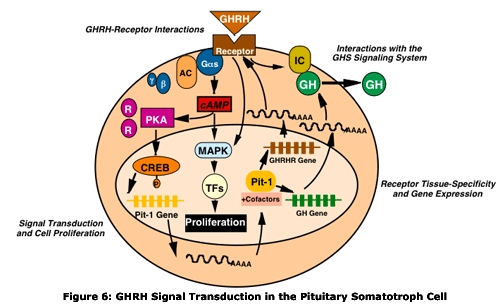(Click here to read our disclaimer)
(Click here to buy Igf Des in our store)
IGF-1 DES-1 is one of the primary mediators some hormone types in the animal body. When this chemical is activated, it can affect the bone, cartilage, muscle, kidneys, skin, nerves, hematopiotic cells and lungs. It creates effects that mimic insulin while regulating cell development and growth—and managing cellular DNA synthesis.
Animals that have a deficiency of these natural hormones or the natural version of IGF-1 can have a diminished stature. Animals such as cattle are often treated with a synthetic version of this chemical to help manage conditions such as Laron syndrome that stems from the deficiency of this chemical within the body.
Influences of IGF-1 Levels in Circulation
There are a number of factors that will impact the natural levels of these hormones or IGF-1 in an animal’s body which can lead to growth deficiencies.
- Factors including the exercise status, time of day, sex, age, nutrition level, body mass index (BMI), stress levels, estrogen status, disease state or xenobiotic intake may affect the level of IGF-1 in the body in a natural setting.
- Xenobiotic intake has been a recent inclusion to this status as studies showed that IGF-1 status included an axis that had potential to disrupt certain endocrine chemicals, therefore labeling this chemical as an endocrine disruptor.
- Different animals will require different levels of some hormone types as well as IGF1 DES1 throughout their life cycle in order to manage the various cell stimulation and body development needed throughout the animal’s lifestyle.
Animals that are raised in farm settings will often receive synthetic versions of IGF1 DES1 to stimulate additional muscle growth to increase the animal’s value as a food course.
Fasting will dramatically and quickly reduce the levels of this hormone, which can lead to negative effects. Free range animals may be at risk for this difficulty–should their food source or nutrition levels in the body change quickly.
Reproductive Performance of Bulls
 This study was designed to determine the effects of IGF-1 on sperm mobility, scrotal circumference and percentage of what’s termed as normal sperm cells in Angus beef cattle.
This study was designed to determine the effects of IGF-1 on sperm mobility, scrotal circumference and percentage of what’s termed as normal sperm cells in Angus beef cattle.
- Blood samples were taken to determine the blood serum concentration of IGF-1 in each animal. The data was obtained from these samples by studying 100 fall-calving purebred Angus bulls.
- It was determined that the percentage of mobile sperm cells, the percentage of what’s known as normal sperm cells, scrotal circumference did not vary between animals with high or low IGF-1 levels.
- When levels of 28, 42 or 56 concentrations of IGF-1 were applied to post-weaning animals, the quadratic regression of the scrotal circumfrance tended to go negative as did the percentage of mobile sperm cells.
The coefficient for quadratic regression in the normal sperm cells was negative for those Angus bulls that received exposure to IGF-1 in 56 concentrations. The scrotal circumference and percentage of normal sperm cells were negative and considered impotent on those bulls that received concentrations of .04 and .08.
IGF1 DES1 is also applied to animals when it is necessary to stimulate reproductive performance. Studies applying this chemical, to include cattle and rats, for this purpose are ongoing.
Sources:
http://www.ncbi.nlm.nih.gov/pubmed/10328346
Click here to view our entire PDF research library
Click here to view or download this article in PDF format

